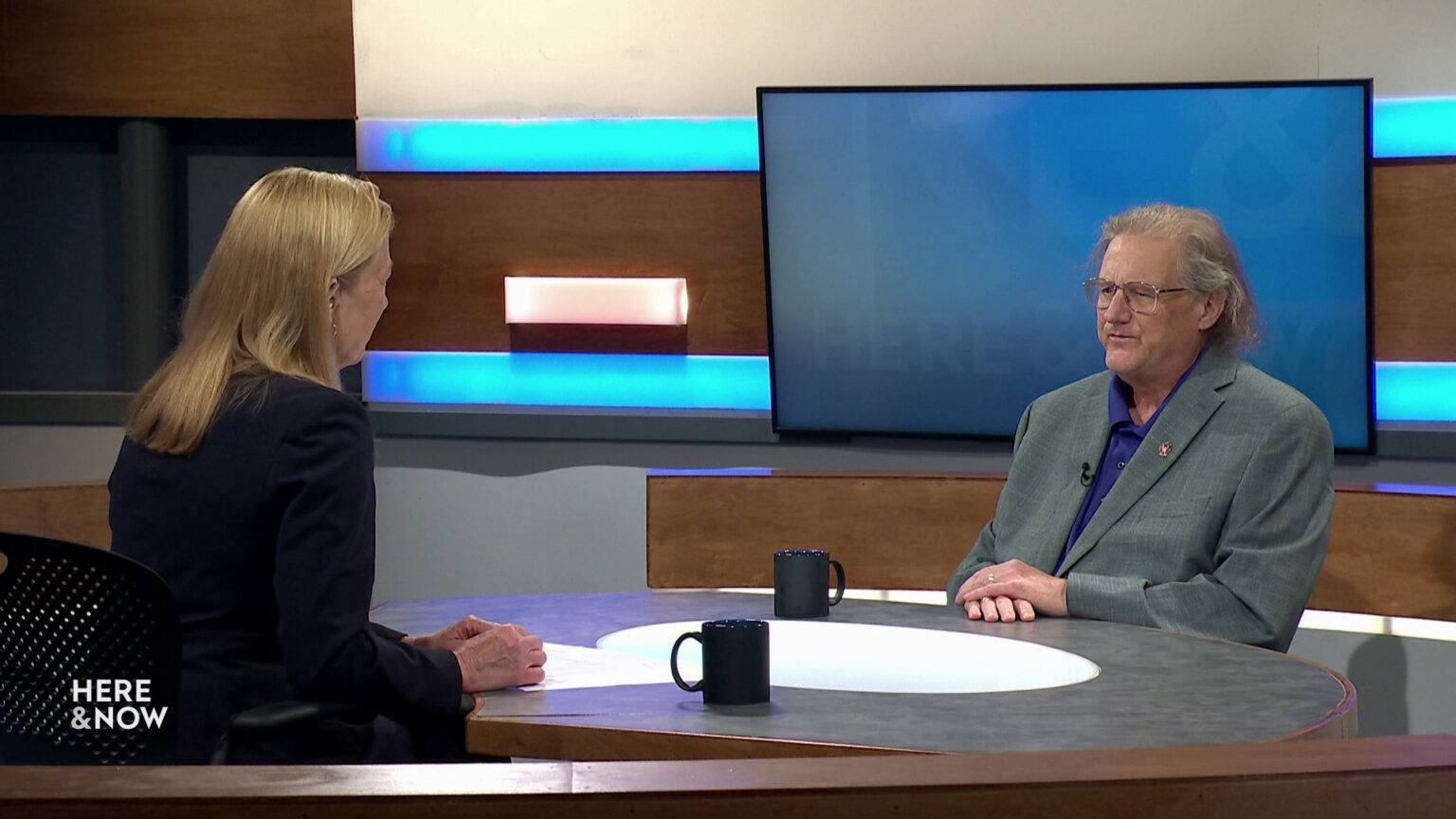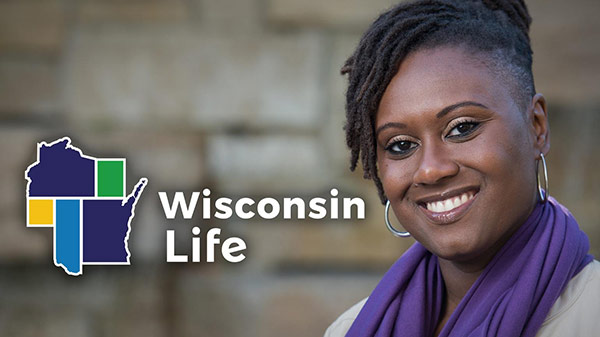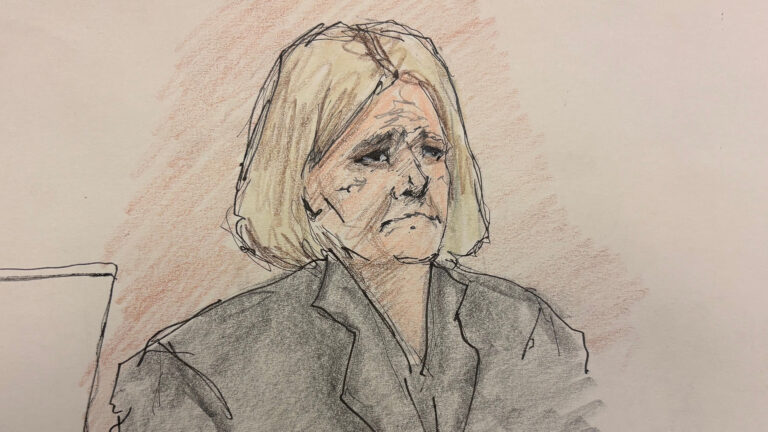'Here & Now' Highlights: Steven Deller, James Barnier, Dr. James Conway
Here's what guests on the Aug. 8, 2025 episode said about the direction of the economy, wildfire suppression in Canada, and the risk of measles outbreaks around Wisconsin.
By Frederica Freyberg | Here & Now
August 11, 2025

Frederica Freyberg and Steven Deller (Credit: PBS Wisconsin)
Uncertainty seems to be the leading economic indicator amid new tariffs and soft jobs and spending figures, according to UW-Madison economics professor Steven Deller. Canadian wildfires raise questions about conditions in Wisconsin’s forests, and state Department of Natural Resources section chief James Barnier described 2025 as an unusual year. The state has its first cases of measles of the year and Wisconsin kindergartners have one of the nation’s lowest vaccination rates against the disease – University of Wisconsin medical school professor Dr. James Conway shared concerns about the risks for wider outbreaks.
Steven Deller
Professor, UW-Madison Department of Agricultural and Applied Economics
- A new round of tariffs taking effect, weaker than expected job numbers and soft consumer spending could forecast an economic slowdown nationally and in Wisconsin. Deller said the overriding sentiment when it comes to the direction of the economy is uncertainty.
- Deller: “From a Wisconsin perspective, and I think this is kind of generally true across the country, is a lot of businesses have gone into a wait-and-see mode. That’s why the job numbers are weak. We’re not seeing an increase in unemployment rates. We’re seeing a decline in the number of hires, primarily because businesses are unsure what’s happening. And when we’re unsure, we kind of go into a lockdown mode. We go into a holding pattern, if you will. So, I think that’s why the job numbers are as weak as they are, and it’s going to take a while for this to kind of play out.”
James Barnier
Forest fire protection section chief, Wisconsin Department of Natural Resources
- Smoke from wildfires in Canada is a regular feature of summer skies across Wisconsin in 2025. As of Aug. 8, there were over 700 active wildfires in Canada, with the majority of them categorized as “out of control,” according to the Canadian Interagency Forest Fire Centre. Barnier said Wisconsin has its share of wildfires and forest fires – especially and unusually in the early months of 2025 – but not to the extent of the acreage seen north of the border. As part of a compact with Canada and surrounding states, Barnier said the Wisconsin DNR sent firefighters to help with the Canadian fires.
- Barnier: ” So, we’ve sent up 20 people to both Ontario and Manitoba. And during that time frame, they’re actually fighting fires and working within that organization on their IMT – incident management teams – to help facilitate that. So doing so, it is a significant event.”
Dr. James Conway
Professor, University of Wisconsin School of Medicine and Public Health Department of Pediatrics
- During the 2024-25 school year, Wisconsin kindergartners had a measles, mumps and rubella vaccination rate of less than 85%, compared to a national rate of 92.5%, with the statewide rate falling since the previous year. The rate in Milwaukee is even lower at 75%. In early August, Wisconsin reported its first measles cases of 2025 in nine people in Oconto County. State health officials said the risk of transmission from those cases is low because there was no contact outside of the nine individuals. However, with vaccination rates well below the 95% needed to prevent community spread, Conway said populations like those in Milwaukee are at risk.
- Conway: “That’s exactly the worst nightmare, because one of the things we need to remember about measles is people are contagious before they have symptoms. So, three or four days before you’re actually ill with obvious symptoms, you may be shedding that virus. And so when you’ve got even 75% or 80% of people immunized, that means 1 in 5 people are vulnerable. Those get transmitted. It’s got a long incubation period, so people can be walking around for weeks, not remember where they got it. And so from a public health standpoint, chasing down where it started and getting people into quarantine and isolation is really a nightmare.”
Watch new episodes of Here & Now at 7:30 p.m. on Fridays.
 Passport
Passport











Follow Us